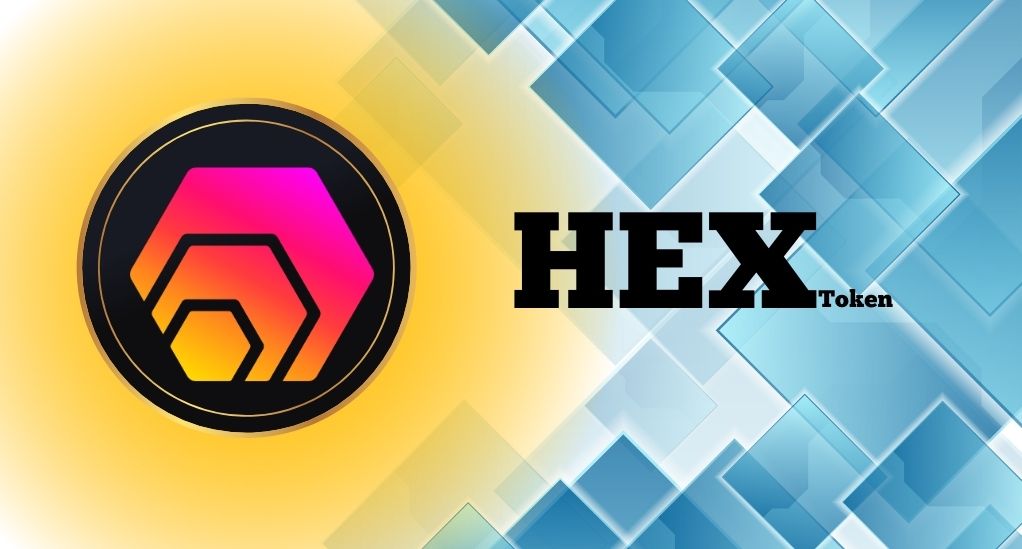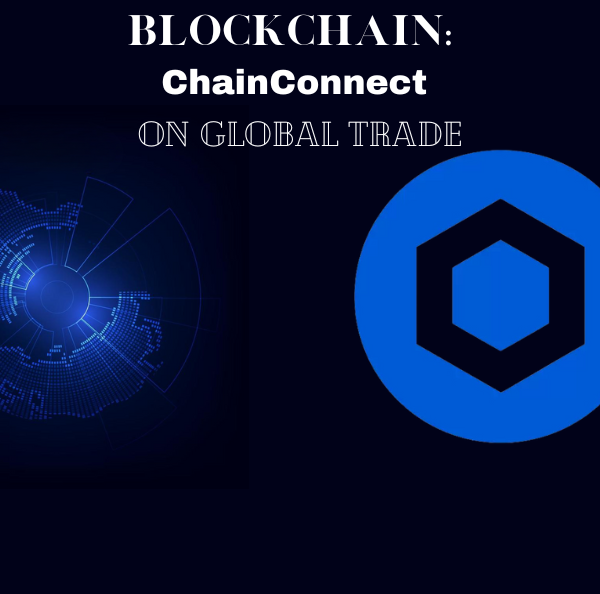The Future of M&A: An Analysis of Tech Industry Consolidation Trends and Predictions

Mergers and Acquisitions, commonly abbreviated as M&A, refer to the consolidation of companies or assets. While a merger denotes the combination of two entities to form a new one, an acquisition is the takeover of one entity by another. Both strategies are employed to enhance strength, accelerate growth, and eliminate competition.
The Role of M&A in Business Growth and Innovation:
The Role of M&A in Business Growth and Innovation is multifaceted and pivotal in the modern business landscape. Mergers and Acquisitions (M&A) have become instrumental in facilitating companies to expand their market reach, enabling them to tap into new markets and broaden their customer bases, which in turn leads to an increased market share. Furthermore, M&A activities play a crucial role in optimizing resources. When companies merge or acquire, they often gain access to invaluable resources, whether it’s human capital, cutting-edge technology, or intellectual property. This consolidation often leads to an influx of fresh perspectives, fostering an environment ripe for innovation. Moreover, the economies of scale achieved through M&A can lead to significant cost reductions, making operations more cost-efficient. In essence, M&A not only propels businesses towards expansive growth but also acts as a catalyst for innovation, driving companies to pioneer novel solutions and products in their respective industries.
The Evolution of M&A: A Historical Perspective: Historically, M&A activities were primarily driven by the desire to monopolize markets and eliminate competition. However, in the modern era, the motivations behind M&A have diversified, encompassing strategic growth, technological acquisition, and even talent acquisition.
Impact of Technological Advancements on M&A:
- Data-Driven Decisions: With the rise of big data and analytics, companies can make more informed decisions about potential M&A targets.
- Virtual Due Diligence: Advanced communication tools and virtual data rooms have streamlined the due diligence process, making cross-border M&A more feasible.
- Integration Efficiency: Technological tools facilitate smoother post-merger integrations, ensuring that businesses can quickly realize the benefits of M&A.
- Emergence of Tech Startups: The rapid proliferation of tech startups has led to a surge in acquisitions, especially by larger firms looking to integrate innovative technologies.
The Rise of AI in M&A Decision Making: Artificial Intelligence (AI) has brought about a paradigm shift in M&A. Machine learning algorithms can now analyze vast amounts of data to identify potential acquisition targets, assess risks, and predict the success of mergers. AI tools can also streamline due diligence by automating data analysis, reducing human error, and speeding up the process. Furthermore, predictive analytics powered by AI can forecast post-merger integration challenges, allowing businesses to strategize proactively.
IoT: Connecting Businesses and Opportunities: The Internet of Things (IoT) has transformed industries by connecting devices and systems, enabling real-time data collection and analysis. In the context of M&A, IoT offers insights into operational efficiencies, customer behaviors, and potential revenue streams of acquisition targets. For instance, a manufacturing firm equipped with IoT sensors can provide valuable data on its production efficiency, which can be crucial during an acquisition evaluation.
Digital Platforms: The New M&A Marketplaces: Digital platforms have democratized the M&A process. Online M&A marketplaces and platforms allow businesses to showcase themselves to potential buyers or investors, making the discovery process more transparent and efficient. These platforms also offer tools for virtual due diligence, secure document sharing, and real-time communication, simplifying the traditionally complex M&A process.
Big Data and Analytics: The Game Changers in M&A: Big data has revolutionized the decision-making process in M&A. With the ability to analyze vast datasets, companies can gain deeper insights into market trends, customer preferences, and potential business synergies. Analytics tools can evaluate the financial health, cultural fit, and potential risks associated with acquisition targets. By leveraging big data, businesses can make more informed decisions, ensuring the success and profitability of their M&A endeavors.
Automation and Robotics: The New Frontiers in Mergers and Acquisitions (M&A)

The rapid advancements in technology have ushered in an era where automation and robotics are at the forefront of industrial evolution. Their influence is not just limited to operational efficiency but extends to strategic business decisions, especially in the realm of Mergers and Acquisitions (M&A).
The Ascendancy of Automation in Modern Industries: Automation, the use of systems or machines to perform tasks without human intervention, has become a cornerstone for industries aiming to optimize processes, reduce costs, and enhance productivity. From automotive assembly lines to software-driven customer service, automation is reshaping the way industries function, leading to increased profitability and competitiveness.
The Direct Impact of Automation on M&A Activities: The rise of automation has made it a sought-after asset in the M&A landscape. Companies are keen to acquire firms with advanced automation capabilities to:
- Enhance operational efficiency
- Reduce labor costs
- Improve product quality and consistency
- Stay competitive in the market
Robotics: The Vanguard of Industrial Revolution: Robotics, a subset of automation, involves the design and use of robots to perform tasks. The modern industry has seen a surge in the use of robots, from collaborative robots working alongside humans to autonomous robots performing intricate tasks with precision. Their ability to work tirelessly, eliminate human error, and adapt to various tasks makes them invaluable assets.
Case Study: Manufacturing Companies and Robotics Firm Acquisitions:
Background: In the early 2000s, a leading car manufacturing company faced challenges in scaling production and maintaining consistent quality.
Challenge: The manual assembly process was slow, prone to errors, and not scalable to meet growing demand.
Solution: The company decided to acquire a robotics firm specializing in automotive assembly robots.
Outcome:
- Production rates increased by 70% within a year.
- Product defects reduced by 40%.
- The acquisition paved the way for the company to introduce new car models with complex designs, previously deemed unfeasible with manual assembly.
Consumer Trends Driving Mergers and Acquisitions (M&A)
Consumer behavior and preferences have always been pivotal in shaping business strategies. In the realm of Mergers and Acquisitions (M&A), understanding these trends is crucial. Companies are constantly on the lookout for emerging patterns in consumer behavior to identify potential acquisition targets that align with these trends, ensuring sustainable growth and profitability.
The E-commerce Revolution and its Impact on M&A
The E-commerce Revolution has reshaped the retail sector, drawing consumers to online platforms with its convenience and vast product range. This shift has significantly influenced Mergers and Acquisitions (M&A). Traditional retailers are now merging with or acquiring e-commerce entities to strengthen their digital presence. Meanwhile, e-commerce leaders are targeting niche online retailers to diversify their offerings. Additionally, the surge in online shopping has spurred investments in logistics to support this growing ecosystem. In essence, e-commerce’s rise has recalibrated M&A strategies across the retail landscape.
Subscription-Based Models: The New Norm
Subscription-based models have emerged as the new norm in the business landscape, offering products or services on a recurring basis. Their rise can be attributed to the allure of convenience and the appeal of curated experiences they offer to consumers. From streaming platforms to monthly curated product boxes, these models have found favor across various sectors. This trend has had a ripple effect on Mergers and Acquisitions (M&A). Companies are increasingly drawn to successful subscription-based startups, seeing potential in integrating their unique offerings. Simultaneously, mergers between similar subscription services are becoming common, as they consolidate resources and expand their collective customer bases. Furthermore, the growth of these models has led to increased investments in technological platforms that can efficiently manage and support subscription services, reflecting the model’s significance in modern business strategies.
Health and Wellness: A Dominant Force in Modern M&A
The global emphasis on health and wellness has seen consumers gravitate towards organic, natural, and wellness-centric products and services. This shift has had significant implications for M&A:
- Pharmaceutical and food companies are acquiring or merging with organic and natural product brands to cater to the health-conscious market.
- Fitness and wellness service providers, such as yoga studios or health apps, have become attractive acquisition targets for larger health conglomerates.
- The rise of telehealth and wellness tech platforms has spurred tech giants to invest or acquire in this space, foreseeing its future potential.
Comparison Table: Traditional Retail vs. E-commerce M&A:
| Aspect | Traditional Retail M&A | E-commerce M&A |
|---|---|---|
| Primary Motivation | Market Expansion | Digital Transformation |
| Key Targets | Brick-and-Mortar Stores | Online Platforms |
| Value Proposition | Physical Presence | Digital Reach & Analytics |
| Post-M&A Integration Focus | Store Layout & Inventory | Tech Integration & UX |
Sustainability and Social Responsibility in Mergers and Acquisitions (M&A)
In the contemporary business landscape, Mergers and Acquisitions (M&A) are no longer solely driven by financial gains or market expansion. There’s a growing emphasis on sustainability and social responsibility, reflecting a broader societal shift towards ethical and environmentally conscious business practices.
Aligning M&A with Core Company Values: For modern businesses, M&A activities are increasingly seen as an extension of their core values. Companies are keen to ensure that any merger or acquisition aligns with their ethos, mission, and long-term sustainability goals. This alignment is crucial not only for brand consistency but also for fostering employee morale, customer loyalty, and stakeholder trust.
The Rise of Sustainable M&A: Sustainability-driven M&A focuses on acquiring companies that prioritize environmentally friendly practices, ethical labor standards, and community engagement. Such M&A activities are often driven by a company’s commitment to achieving specific sustainability targets, such as reducing carbon emissions or ensuring ethical supply chains.
Case Study: The Acquisition Wave in the Renewable Energy Sector:
Background: With the global push towards reducing carbon footprints and the looming threat of climate change, the renewable energy sector has witnessed exponential growth.
Situation: A multinational conglomerate, traditionally involved in fossil fuels, recognized the need to diversify its energy portfolio and align with global sustainability trends.
Action: The conglomerate strategically acquired several renewable energy startups specializing in solar and wind energy solutions.
Outcome:
- The conglomerate successfully diversified its energy sources, reducing its overall carbon footprint.
- The acquired startups benefited from increased investments, scaling their operations and innovations.
- The conglomerate’s brand image was enhanced, reflecting its commitment to sustainability and future-forward thinking.
Emerging Markets and Their Influence on Mergers and Acquisitions (M&A)
Emerging markets, characterized by rapid industrialization and exponential growth rates, have become hotbeds for M&A activity. Their vast potential, coupled with the promise of high returns, has made them attractive destinations for global companies seeking expansion and diversification.
The Potential of Asia, Africa, and Latin America:
- Asia: With its booming economies like China and India, Asia offers a vast consumer base, technological advancements, and a burgeoning middle class. The region’s diverse markets present opportunities across sectors, from technology to healthcare.
- Africa: Often dubbed the ‘final frontier’ for growth, Africa boasts a young population, abundant natural resources, and increasing urbanization. Sectors like telecommunications, agriculture, and energy are ripe for investment.
- Latin America: Countries such as Brazil, Mexico, and Argentina offer robust opportunities, especially in agriculture, mining, and services. The region’s push towards digital transformation also presents tech-centric M&A prospects.
Key Drivers of M&A in Emerging Markets
M&A activities in emerging markets are driven by several strategic factors. Companies are drawn to these regions for market access, aiming to tap into their vast and growing consumer bases. The abundance of natural resources in these markets also attracts industries, offering lucrative opportunities. Additionally, the cost efficiencies, particularly in labor, present a compelling advantage for businesses seeking profitability. Moreover, the unique innovations emerging from these regions, such as fintech in Africa or e-commerce in Asia, provide fresh and attractive acquisition prospects for global companies.
Strategies for Tapping into Emerging Market Opportunities
When venturing into emerging markets, several strategic approaches can enhance a company’s success. Forming local partnerships is often a pivotal first step, as collaborating with entities familiar with the region can provide invaluable insights into market dynamics and regulatory nuances. Equally important is the integration into the local culture, understanding its intricacies to ensure long-term success and acceptance. However, these markets come with their set of challenges, from political instability to economic fluctuations, making risk management essential. Companies need to be proactive in anticipating and mitigating potential challenges. Furthermore, adopting sustainable growth practices that benefit local communities and align with global sustainability goals can not only drive business success but also bolster a company’s reputation in the region.
Deep Dive into HEX Token’s Reward System

The HEX token, a prominent player in the cryptocurrency market, has introduced innovative mechanisms that set it apart from traditional cryptocurrencies. One of its standout features is the reward system, which is designed to incentivize long-term holding and stability.
Understanding the ‘Proof of Wait’ Mechanism: At the heart of HEX’s reward system is the ‘proof of wait’ mechanism. Unlike other cryptocurrencies where rewards are often based on computational power (proof of work) or stake size (proof of stake), HEX rewards users based on the duration they commit to holding their tokens. This approach promotes delayed gratification, encouraging users to think long-term. By committing to hold their HEX tokens for a specified period, users can mint their own rewards, eliminating the need for intermediaries.
The Inbuilt Inflation Rate and Its Implications: HEX has introduced an inbuilt inflation rate capped at 3.69% per annum. This controlled inflation ensures that there’s a steady, predictable increase in the token supply, which can be beneficial for staking rewards. Miners earn rewards daily and can choose to mint them all at once at the end of their commitment. This structure, combined with the potential appreciation of the HEX token against the USD, can lead to significant ROI for miners. Additionally, active miners benefit from extra rewards when other miners mint their rewards earlier or later than their committed period.
HEX Coin Price Trends and Predictions for 2024: While the exact future of HEX’s price remains speculative, its past performance provides some insights. The token has seen substantial growth, with 10,000 HEX previously costing $0.57 and now valued at $82. Such a trajectory suggests a positive market sentiment towards HEX. If HEX continues on its current path and considering its unique reward mechanisms, it’s plausible that its value could further increase by 2024. However, like all cryptocurrencies, HEX’s price is subject to market dynamics, regulatory changes, and broader economic factors.
Conclusion
The M&A landscape is undergoing a transformative shift, driven by the rapid pace of technological advancements and the ever-evolving preferences of consumers. As we move further into the digital age, the boundaries that once defined industries are becoming increasingly blurred. Traditional M&A motivations, which primarily revolved around market expansion and asset acquisition, are now being complemented by the pursuit of technological prowess and alignment with modern consumer demands. Companies are recognizing that to remain competitive and relevant, they must not only adapt to the current digital and consumer trends but also anticipate future shifts. This proactive approach ensures that businesses are not just reacting to the market but actively shaping it.
The emergence and integration of digital assets, like the HEX token, into the broader M&A discourse exemplify the changing perceptions of value in the modern business world. Cryptocurrencies, once viewed with skepticism, are now being acknowledged for the innovative technologies and mechanisms they bring to the table. HEX, with its unique ‘proof of wait’ system, represents the potential of digital assets to redefine traditional financial and reward structures. As more companies begin to understand and appreciate the intricacies of such assets, we can anticipate a future where digital currencies and their underlying technologies become central to M&A strategies, reflecting the broader shift towards a more interconnected and digitized global economy.
At bstash.io, our mission is to offer impartial and dependable information on cryptocurrency, finance, trading, and stocks. Nevertheless, we are unable to offer financial guidance and encourage users to conduct their own research and thorough investigations.
Read MoreRisk Disclaimer >> Ad disclosure At bstash.io, we are committed to empowering you to make well-informed financial decisions. In pursuit of this, we collaborate with experts to deliver current news and information. Compensation may be earned when you click on specific links, engage with sponsored posts, explore products or services, connect with brokers, or interact…





